This post first appeared over at ClarkHoward.com.
Although the term "life hacks" is a relative newcomer to our daily vernacular, the idea of household tips and tricks is far from new. So when I discovered a series of century old household hints, I had to dig a little deeper. Created by Gallaher Ltd. of Belfast and London, these delightfully illustrated cardboard inserts were included in cigarette packs as "stiffeners." Described as a "How-To" series, many of these tips are as useful today as they were for our great-great-grandparents.
Tip #1, How to cool wine without ice:
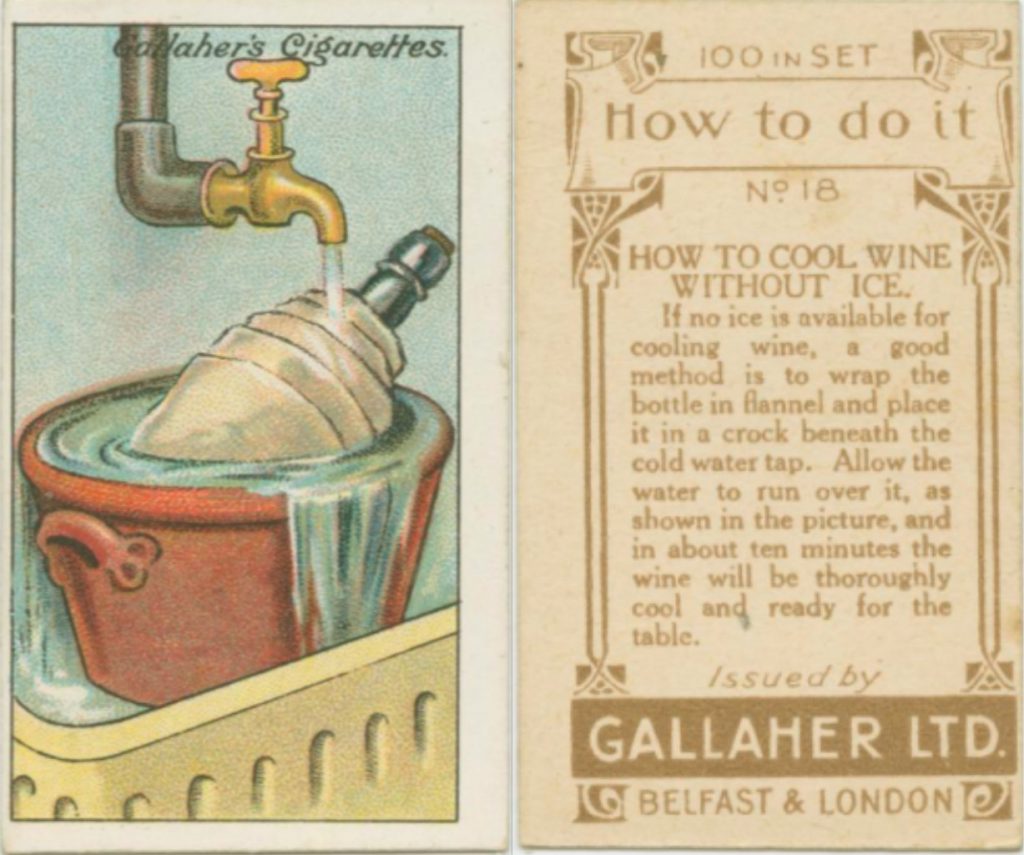
"If no ice is available for cooling wine, a good method is to wrap the bottle in flannel and place it in a crock beneath the cold running water tap. Allow the water to run over it, as shows in the picture, and in about ten minutes the wine will be thoroughly cool and ready for the table."
Tip#2, How to revive cut flowers:
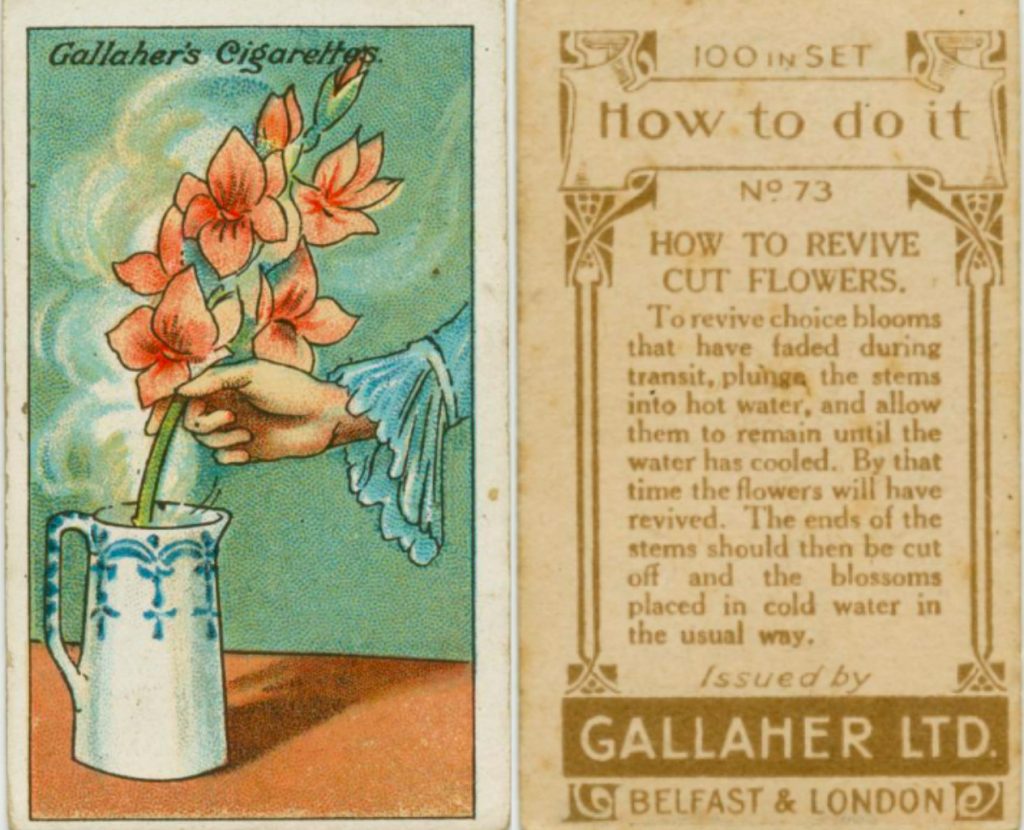
"To revive choice blooms that have faded during transit, plunge the stems into hot water, and allow them to remain until the water has cooled. By that time the flowers will have revived. The ends of the stems should then be cut off and the blossoms placed in cold water in the usual way."
Tip#3, How to pull out long nails:
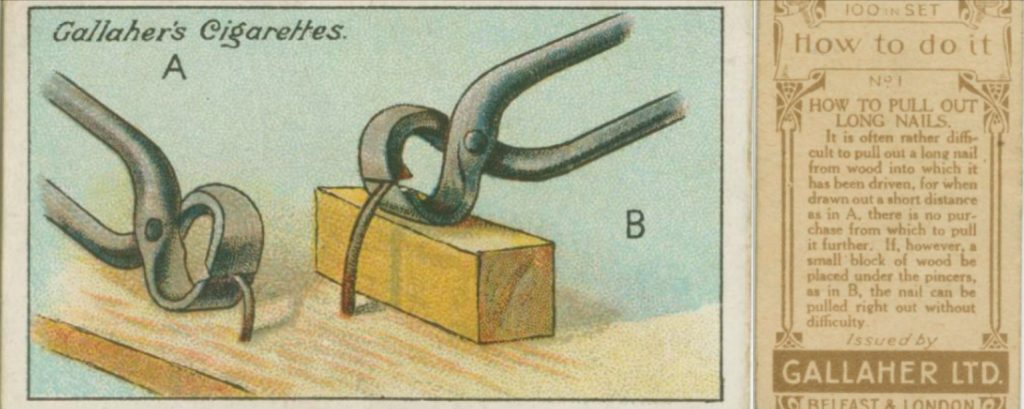
"It is often rather difficult to pull out a long nail from wood into which it has been driven, for when drawn out a shirt distance as in A, there is no purchase from which to pull it further. If, however, a small block of wood be placed under the pincers, as in B, the nail can be pulled right out without difficulty."
Tip #4, How to prevent eye-glasses "steaming:"
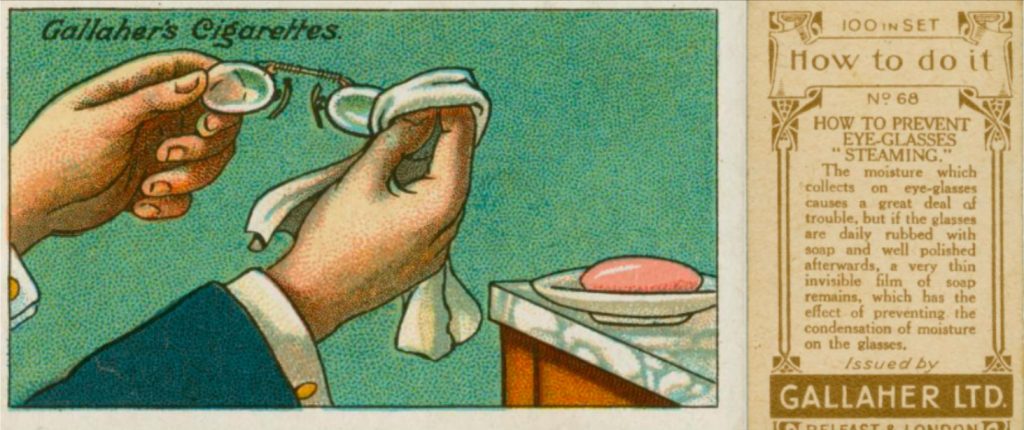
"The moisture which collects on eye-glasses cause a great deal of trouble, but if the glasses are daily rubbed with soap and well polished afterwards, a very thin invisible film of soap remains, which has the effect of preventing the condensation of moisture on the glasses."
Tip#5, To separate glass tumblers:
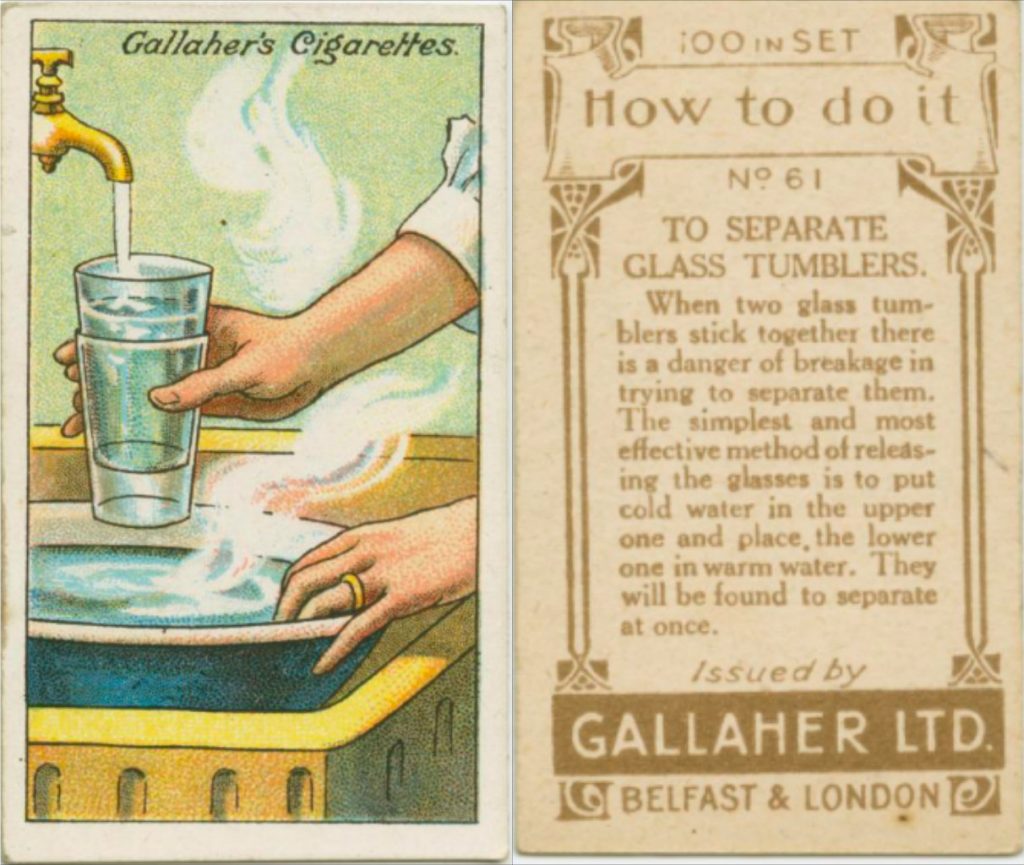
"When two glass tumblers stick together there is a danger of breakage in trying to separate them. The simplest and most effective method of releasing the glasses is to put cold water into the upper one and place the lower one in warm water. They will be found to separate at once."
Of course, not all of the century-old how-to tricks can be classified as entirely useful. For example, "How to draw a duck without pencil leaving the paper."
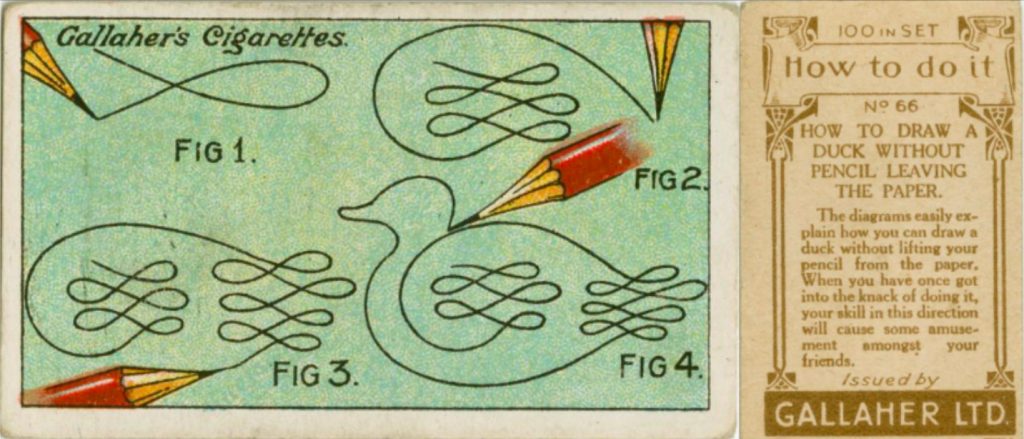
Other tips are clearly dated, such as this "How to use up coal dust" card. Although I do appreciate the unique insight into how difficult daily life was for people at the beginning of the twentieth century.
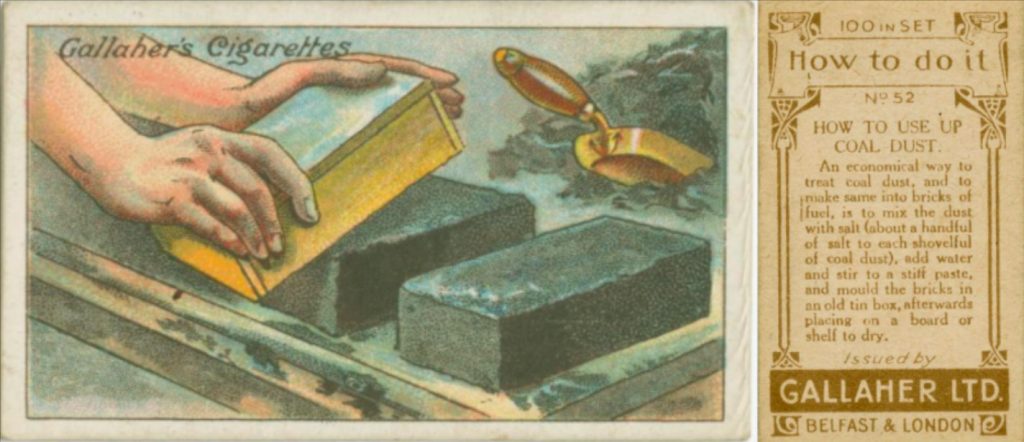
"An economic way to treat coal dust, and to make same into bricks of fuel is to mix the dust with salt (about a handful of salt to each shovelful of coal dust), add water and stir to a paste, and mould the brick in an old tin box, afterwards placing on a board pr a shelf to dry."
There are multiple tips that involve potatoes, which were certainly in great supply.
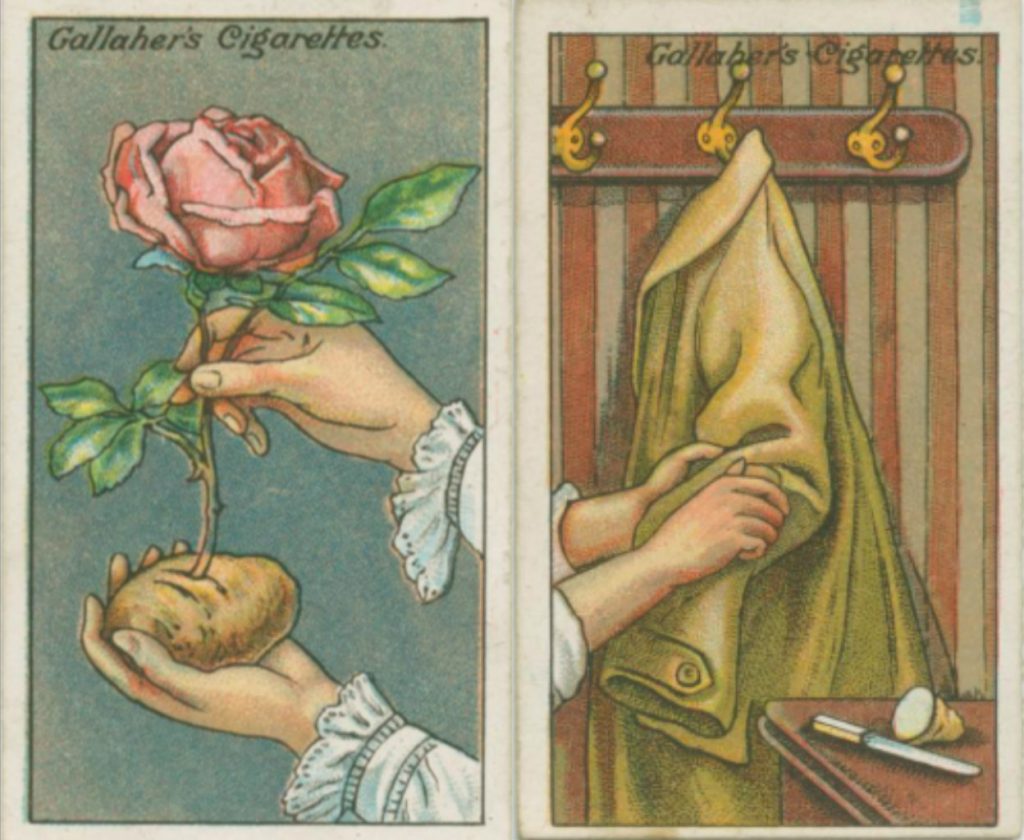
For example, this "How to clean oil painting" card:
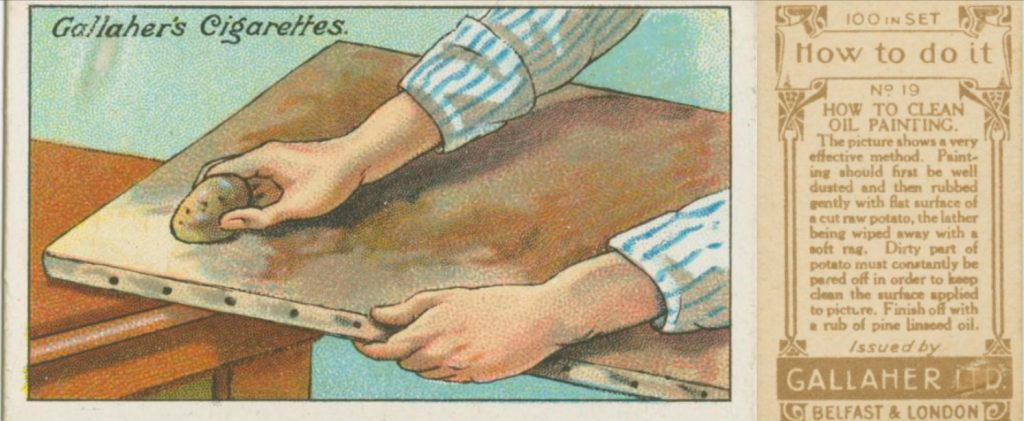
"The picture shows a very effective method. Painting should first be well dusted and then rubbed gently with last surface of a cut raw potato., the lather being rubbed away with a soft rag. Dirty part of potato must constantly be pared off in order to keep clean the surface applied the picture. Finish off with a rub of pine linseed oil."
I'm pretty sure that this method would not win any art historian's seal of approval!
The last how-to card I'll share is a cringe-worthy tip, that should in no way be practiced in today's modern times. Do NOT try this at home!
How to treat bite of animal:
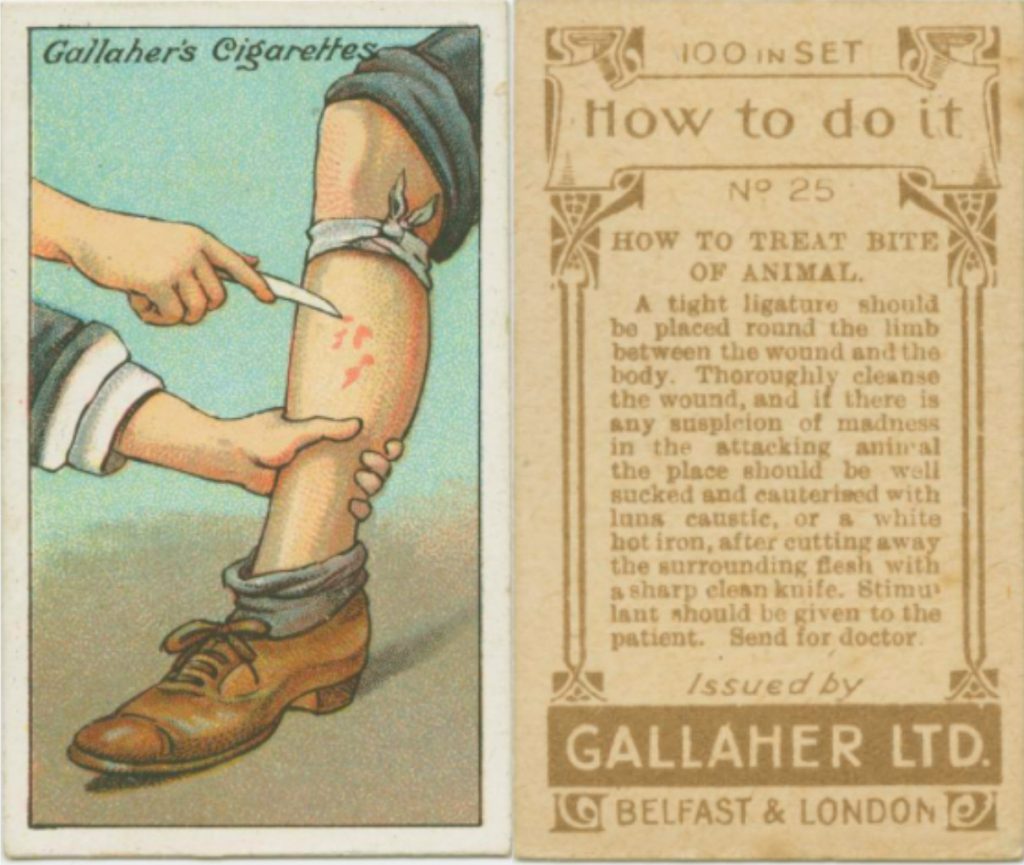
"A tight ligature should be placed round the limb between the wound and the body. Thoroughly cleanse the wound, and if there is any suspicion of madness in the attacking animal the place should be well sucked and cauterised with luns caustle, or a white hot iron, after cutting away the surrounding flesh with a sharp clean knife. Stimulant should be given to the patient. Send for doctor."
It's a good thing to live in the time of modern medicine, because although I don't know what "luns caustle" is, I am familiar with the term "white hot iron!" So I think I'll pass on this particular olde timey household hint.
The New York Public Library has a extensive digital collection of these how-to cards, as well as many others. They're a fascinating look into daily household life for those who lived a hundred years ago. People who found many uses for potatoes, and hopefully stayed far, far away from any rabid animals.
Katy Wolk-Stanley
"Use it up, wear it out, make it do or do without."
Click HERE to follow The Non-Consumer Advocate on Instagram.
Click HERE to join The Non-Consumer Advocate Facebook group.
Click HERE to follow The Non-Consumer Advocate on Pinterest.










These are fabulous! Let's draw ducks to impress our friends! Simpler times indeed... I think it's Luna Caustic for animal bites, which is silver nitrate - and yes, rather drastic means, I am grateful for modern medicine too!
I found this snippet from the Wiki entry on silver nitrate:
Fused silver nitrate, shaped into sticks, was traditionally called "lunar caustic". It is used as a cauterizing agent, for example to remove granulation tissue around a stoma. General Sir James Abbott noted in his journals that in India in 1827 it was infused by a British surgeon into wounds in his arm resulting from the bite of a mad dog to cauterize the wounds and prevent the onset of rabies.
My grandmother has a collection of these that we came across while going through her belongings after her passing. There was one specific card detailing how to treat jock itch...but I won't go into detail here 🙂 Needless to say, my younger brother kept that one.
Oh goodness, the last one!
Seriously, though, these are neat. The flower one and the glasses one are particularly useful for me-I'll have to give them a try.
I did try the planting a rose cutting in a potato---but no one told me to cut the eyes out of the potatoes. I grew a healthy crops of new potatoes, but no roses. Then I figured out the problem!
Were the bricks made of coal dust used like charcoal briquettes are used today?
Actually I know an art restoration specialist. She cleans dirty paintings by dabbing them with wads of soft white Wonder Bread. When the bread is dirty, replace it with clean bread. My mom was a smoker and I cleaned some paintings I inherited from her. It worked great.
I love household hints of all kinds. Thanks for these. As you say, they're fascinating.
Re: the last one, there's a description of this in Louisa May Alcott's final Little Women sequel, Jo's Boys. Jo's older son, Rob, gets bitten by a dog who's been left with the Bhaer family and is acting strangely because of missing his master plus summer heat. (Rob's goofball younger brother, Ted, unwisely teases the dog--and learns a few lessons about impulse control that day.) Nan, a Plumfield alum who's studying to be a doctor, is spending her vacation with the Bhaers and applies the white-hot poker treatment to Rob's bite. Yow!!
Totally wasting time at work practicing the duck drawing. It is not as easy as it looks.
What was the potato and the coat tip?
I liked this post. My father's family had coal furnaces. I never heard about coal dust, though. They used to put the cinders in the driveway instead of concrete. It made a softer surface. We used to play kick the can on them.
No idea of the potato and coat hack.
Fun ideas but DON'T do the one suggesting that rubbing eyeglass lenses with soap will prevent fogging. If you have coatings on your lenses (especially anti-reflective coating) you could cause the coatings to break down prematurely. AR gone bad looks like bubbly saran wrap on your lenses. A good optician can put an anti-fog treatment on glasses.
The soap trick works for a fogged up bathroom mirror if you use shaving cream on it. Shaving cream is just aerosolized concentrated soap, so same thing really.
Oh sweet lord, I almost stopped reading when I saw the picture with the knife! Gives me the heebie jeebies!
But it's a great reminder that we live in a time of ultimate convenience. I'm sure in 100 years our way of live will look primitive and difficult--but we don't realize it because we don't know any different.
I'd love to know more "life hacks", such as how to get the ;last bit of nail polish from the bottle (and keep it from getting thick)...my dilemma last night.
Art conservators don't usually employ potatoes, but objects conservators (furniture and etc.) use spit. Yes, spit as in saliva. The enzymes can't be beat for safely removing certain types of surface dirt and debris. There's a recipe for artificial spit which is great if you need large quantities, but if you only need a Q-tip's worth, you can use the real thing.